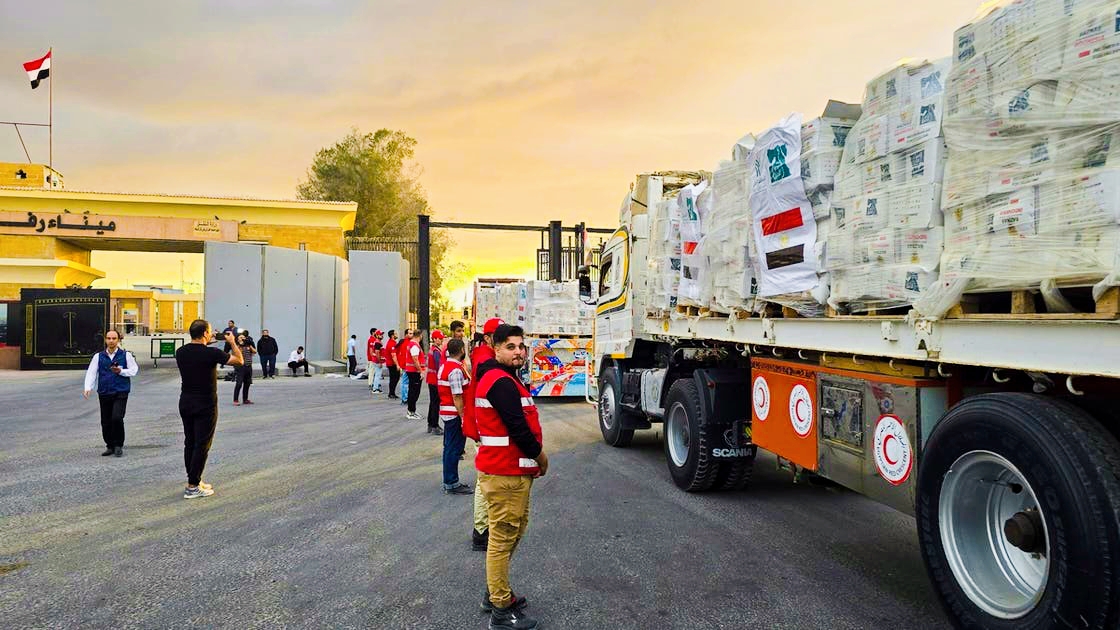Gaza After the Ceasefire: Ongoing Famine and Closed Crossings

Despite the ceasefire that ended a two-year war between Israel and Hamas, the northern areas of the Gaza Strip, which are experiencing a worsening famine, remain deprived of humanitarian aid, according to the United Nations announced yesterday, Friday.
* Destroyed Roads and Closed Crossings
The United Nations confirmed that aid convoys face enormous difficulties in reaching the most affected areas due to the severe damage to the road network and the continued closure of the main crossings in the northern sector, specifically Zikim and Erez (Beit Hanoun).
This comes despite approximately 560 tons of food aid entering Gaza daily since the ceasefire brokered by the United States.
* "Narrow Window" and Opportunity for Rescue
Abir Atifa, spokesperson for the World Food Programme, said from Geneva:
"The current amount is still less than the actual need, but we are getting closer... the ceasefire provided a narrow window, and we are working at full speed to expand relief operations."
The programme indicated that it has not yet started distributing aid in Gaza City, which is one of the most affected areas, due to inaccessibility from the south via destroyed or closed roads.
* Fletcher in Gaza: Emergency Plan and Huge Challenges
For his part, Tom Fletcher, the UN Under-Secretary-General for Humanitarian Affairs and Emergency Relief Coordinator, visited Gaza yesterday, Friday, to assess the situation of relief teams. He wrote on the platform "X":
"I am in Gaza, supporting our teams in implementing the sixty-day plan to expand life-saving work. The challenges are immense, but we are determined to deliver aid thanks to the humanitarian momentum provided by the peace agreement led by President Trump."
Fletcher confirmed that ending the famine in the northern sector requires the entry of thousands of trucks weekly, with all crossings leading to those areas opened.
* Health Situation: A Disaster Awaiting
The health sector in northern Gaza is facing near-total collapse;
Doctors Without Borders announced that many relief agencies have not resumed their work at full capacity there, and hospitals are suffering from a severe shortage of resources, depriving civilians of basic medical care.
Jacob Granger, emergency coordinator at the organization, recounted a painful story of a woman who was injured by shrapnel during the war in Gaza City, who was unable to access medical care to change her bandage for five days.
"When the bandage was opened after five days, the wound was infested with worms and larvae," said Granger.
* Huge Numbers... But Not Enough
On Thursday, about 950 trucks entered southern and central Gaza through the Karam Abu Salem and Kessufim crossings, according to the UN Office for the Coordination of Humanitarian Affairs.
The day before (Wednesday), 715 trucks were recorded entering, including 16 trucks carrying fuel and gas, according to what intermediaries reported from the Israeli government's Coordination Unit in the territories.
* Urgent Calls to Open Crossings
UN officials and the World Food Programme emphasize that opening the northern crossings is the crucial step to reversing the course of famine and saving thousands of lives.
"Access to Gaza City and the northern sector represents a huge challenge, and we cannot stop the famine unless the crossings there are opened," says Abir Atifa.
In light of the scarcity of food and medical care, and the destruction of infrastructure, the northern areas of Gaza remain at the heart of a suffocating humanitarian crisis that could worsen unless international parties act quickly to impose urgent solutions on the ground.